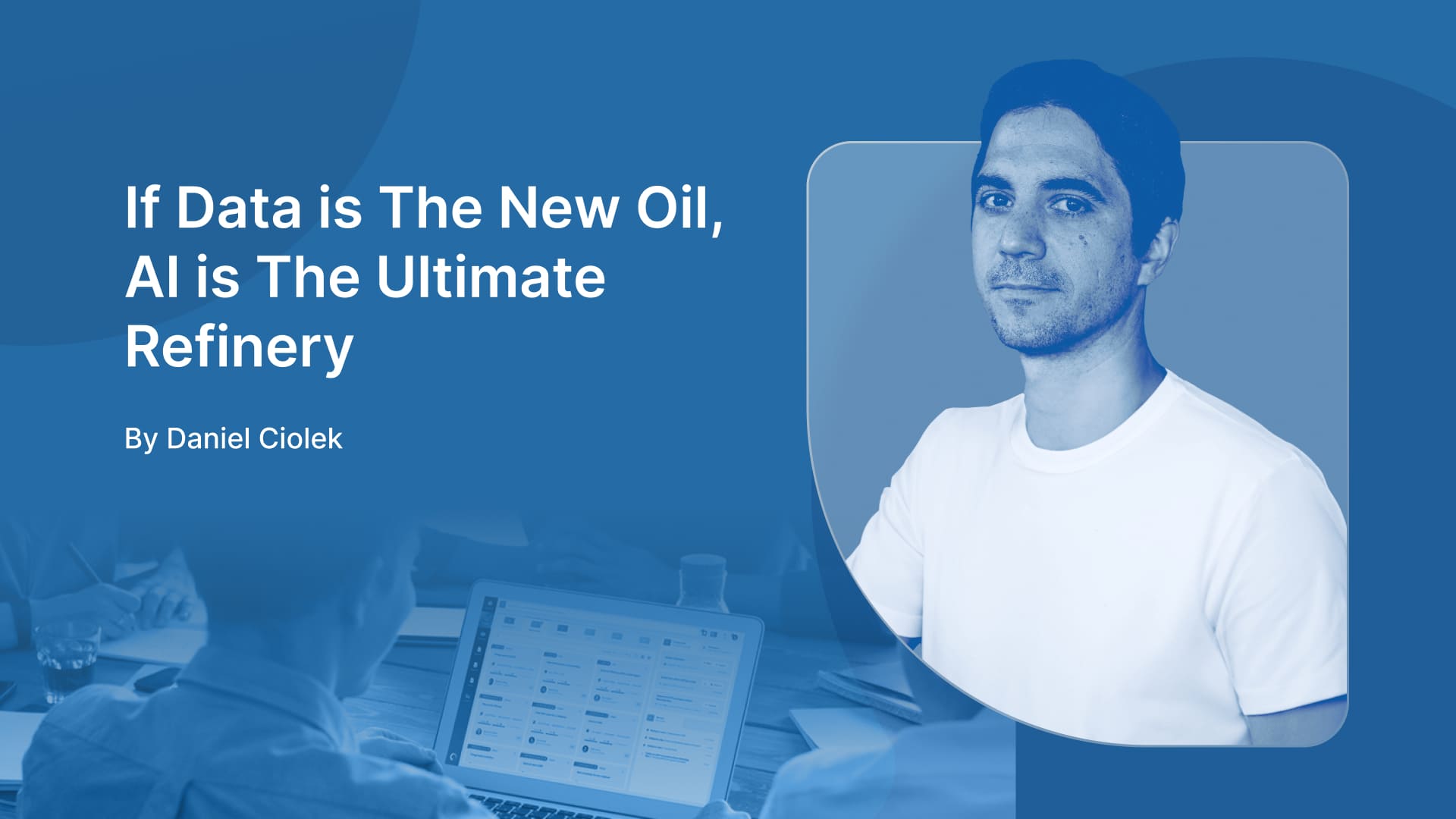Keeping everything organized can become a real challenge in a world where data is flowing in from multiple sources. Data integration platforms are the solution: These tools serve as bridges between different systems, allowing businesses to bring data from various places into one cohesive view.
In this guide, we’ll explore what data integration platforms are, why they’re valuable, and what features you should look for when selecting one for your organization. We’ll also cover some of the top available platforms to help you make an informed decision.
What are data integration platforms?
A data integration platform is a tool that facilitates the process of combining data from different sources — whether they be databases, cloud services, or on-premise systems — into a single, unified format. These platforms enable companies to merge, clean, and structure their data to become more usable and actionable.
Imagine a business with customer data stored in one system, sales information in another, and marketing reports scattered across multiple platforms. A data integration platform helps link all these disparate data sources, creating a more holistic view of the business.This integrated data environment also lays the groundwork for building a data warehouse, where information can be stored, queried, and analyzed more efficiently over time.
These platforms typically support ETL (Extract, Transform, Load) and ELT (Extract, Load, Transform) processes, enabling the movement and transformation of data across different environments. They can vary widely in scope, functionality, and deployment models, which can include cloud-based solutions, on-premises installations, open-source offerings, and proprietary software.
Why are they important?
Data is a critical asset for modern organizations, but without proper integration, data remains fragmented and difficult to work with. Data integration platforms help organizations solve this problem by:
- Reducing manual data entry and error rates
- Making real-time data accessible across departments
- Providing a complete view of operations and customers
- Supporting better decision-making through unified data
What can data integration platforms be used for?
Data integration platforms serve several use cases across various industries. Here are a few examples of how businesses typically use these tools:
- Data migration: When companies upgrade to new systems or move data from legacy systems to the cloud, data integration platforms help facilitate the smooth transition of information.
- Real-time analytics: Businesses often need real-time insights to make informed decisions quickly. Data integration platforms provide this by syncing data from various sources in real time.
- Master Data Management (MDM): MDM requires consolidating and organizing data to ensure consistency and accuracy across different departments. Data integration platforms help maintain this consistency.
- Customer 360 views: Many organizations use these platforms to get a complete view of their customers by integrating data from CRM systems, marketing tools, and other relevant sources.

Key features to look for in data integration platforms
When evaluating platforms, several features stand out as essential to ensure smooth and efficient data integration.
- Data transformation capabilities:
The platform should allow you to transform data, ensuring that it is consistent and follows a standardized format across systems. This can involve data cleaning, mapping, and formatting.
- ELT (Extract, Transform, Load) support:
ELT tools are critical for pulling data from different sources, transforming it into a usable format, and then loading it into a target system. Look for platforms that offer robust ETL support, whether through pre-built functions or customization options.
- API management:
A strong API management feature will allow you to integrate with different systems more seamlessly. APIs act as a bridge between various applications, enabling better communication and data exchange.
- Security features:
Data security is a top concern for most businesses. Choose a platform that offers encryption, secure data storage, and compliance with regulations like GDPR and HIPAA.
- Monitoring and reporting:
Good platforms provide monitoring tools to track the status of your integrations and alert you to potential issues. Real-time reporting can help you stay on top of any errors or delays in the data flow.

Top data integration platforms
With many data integration platforms available, it’s important to consider both functionality and fit for your organization’s needs. Below are some of the top platforms for 2024.
Enterprise solutions
First, we'll list some enterprise solutions. These platforms are designed to handle high volumes of data and complex workflows, making them suitable for enterprises with intricate IT environments. Now, let's explore some notable players in this category.
Oracle Data Integrator
Oracle Data Integrator is an enterprise-level solution designed for complex data integration tasks. It supports both batch and event-driven integrations and is particularly effective for organizations already using Oracle products. Its capabilities include low-code automation, big data support, and integration with Oracle GoldenGate for real-time data replication.
The platform is available as both on-premises software and a cloud-based solution. Recognized as a leader in the field, Oracle has consistently delivered enhancements to its tools, making it a preferred choice for enterprises that require robust data integration solutions.
Informatica Cloud Data Integration
Informatica is another major player in the data integration market, offering a wide range of solutions for ETL processes, data quality, and master data management. Informatica's Intelligent Data Management Cloud provides a comprehensive suite for integrating and managing data across hybrid environments.
Its capabilities include automated data discovery, lineage tracking, and real-time monitoring of data flows. Informatica is known for its strong focus on data governance and compliance, making it a trusted choice for organizations that prioritize data integrity and security.
Microsoft Azure Data Factory (ADF)
Microsoft Azure Data Factory (ADF) is a robust cloud-based data integration service designed to facilitate the creation, scheduling, and orchestration of data workflows. It excels in ETL (Extract, Transform, Load) processes, allowing organizations to seamlessly move data from various sources into Azure data services like Azure SQL Database and Azure Synapse Analytics.
ADF supports both cloud and on-premises data sources, making it versatile for hybrid environments. Its visual interface simplifies the design of complex data transformation workflows, enabling users to execute tasks without extensive coding knowledge. Additionally, ADF offers built-in monitoring tools to track performance and ensure reliability, making it particularly suited for businesses invested in the Microsoft Azure ecosystem.
AWS Glue
AWS Glue is Amazon's fully managed data integration service that simplifies the process of discovering, preparing, and combining data for analytics, machine learning, and application development. It provides a serverless environment where users can create ETL (Extract, Transform, Load) workflows with minimal infrastructure management. AWS Glue allows organizations to connect to various data sources using built-in connectors and APIs, including databases, data lakes, and SaaS applications.
The service automates much of the data preparation process, enabling users to focus on deriving insights rather than managing complex integration tasks. With features like data cataloging and schema discovery, AWS Glue helps maintain a single source of truth across diverse datasets.
Google Cloud Data Fusion
Google Cloud Data Fusion is a fully managed cloud-native data integration service that empowers organizations to build and manage ETL pipelines with an easy-to-use visual interface. It supports a wide array of data sources and integrates seamlessly with other Google Cloud services, such as BigQuery and Cloud Storage.
Data Fusion enables users to transform and enrich their data through a drag-and-drop interface, which simplifies the creation of complex data workflows without extensive coding knowledge. Its ability to handle both batch and real-time data processing makes it versatile for various use cases, from simple data migrations to sophisticated analytics projects.
Matillion
Matillion is a cloud-native ETL solution specifically designed for modern data warehouses like Amazon Redshift, Google BigQuery, and Snowflake. It provides an intuitive user interface that allows users to create and manage ETL workflows efficiently.
Matillion offers pre-built connectors to numerous data sources, enabling quick integration and transformation of data into the desired format for analysis. Its orchestration capabilities allow users to schedule jobs and automate workflows easily, making it suitable for organizations looking to streamline their data integration processes while leveraging the power of cloud-based analytics.
Talend
Talend has a modular architecture that supports cloud, on-premises, and hybrid deployments for data integration. This flexibility makes it suitable for various integration scenarios, from simple ETL tasks to complex enterprise needs.
Known for its extensive library of over 1,000 connectors, Talend supports both ETL and ELT processes, making it adaptable for various organizational needs.
It emphasizes data quality management by embedding checks throughout the integration process, ensuring that only clean and reliable data is utilized for decision-making. Talend also features real-time change data capture (CDC) capabilities to keep datasets fresh and relevant.

Other specialized data integration tools
Next, we'll list other integration tools that target specific use cases or provide simpler solutions that can be deployed quickly without extensive IT involvement. These platforms are more agile and user-friendly, making them suitable for small to medium-sized businesses or specific departmental needs. Examples include:
SnapLogic
SnapLogic specializes in integrating cloud-based applications and services through its intelligent integration platform. It uses a visual interface that allows users to create integrations quickly using pre-built connectors. SnapLogic’s focus on automation and ease of use makes it particularly appealing to businesses looking to streamline their operations without extensive IT involvement. The platform supports both real-time and batch processing of data, providing flexibility for various integration scenarios.
Fivetran
Fivetran specializes in data integration with a strong emphasis on real-time data replication using Change Data Capture (CDC) technology. It automates the ETL process by providing fully managed pipelines that continuously sync data from various sources into a centralized warehouse like Snowflake or BigQuery.
Fivetran's focus on maintaining data integrity and accuracy makes it particularly valuable for organizations that rely heavily on analytics. Its automated schema management ensures that any changes in source systems are reflected in the destination without manual intervention, making it a preferred choice for analytics-driven companies.
How to choose a data integration platform
Choosing the right data integration platform can seem complex, given the numerous options available. Here are a few steps to help narrow down your choices:
- Assess your data needs
Start by identifying the data sources that need integration. Does your organization rely on cloud services, on-premise systems, or a mix of both? How many sources need to be connected? Understanding the scope of your integration needs will guide your choice.
- Check scalability
Make sure the platform can scale with your business. As your company grows, your data volumes will increase, so you'll need a platform that can handle more sources and larger amounts of data without slowing down.
- Evaluate ease of use
Look for platforms that offer intuitive interfaces, particularly if your team lacks deep technical skills. A user-friendly platform will allow your team to manage integrations without relying heavily on IT support.
- Consider integration speed
Some platforms are built to handle real-time integrations, while others focus more on batch processing. Determine whether your organization needs instant access to up-to-date data or if periodic data syncing suffices.
- Look at pre-built connectors
Pre-built connectors make it easier to link different applications and systems without extensive custom coding. Make sure the platform supports the connectors you need, especially for your most commonly used tools.
- Check for customization options
While pre-built connectors are useful, you may need to customize certain aspects of the integration. Choose a platform that allows flexibility in building custom integrations for more complex needs.
Data integration platforms and the future of data analysis
Data integration platforms are becoming increasingly essential in the broader landscape of data analysis. By combining data from diverse sources, these platforms enable businesses to extract more value from their data, making it easier to analyze and act on insights. With the growing complexity of data sources, such as IoT devices, cloud applications, and social media channels, integrating and analyzing this information efficiently has become vital for staying competitive.
As we look toward the future, data integration platforms are evolving to support more advanced data analysis techniques, including AI and machine learning. These technologies can automate the detection of patterns, anomalies, and trends that might otherwise be missed.
However, these quick changes in data integration must be paired with a heightened focus on security. As more sensitive data is processed and shared between systems, ensuring data privacy and regulatory compliance is critical.

Conclusion
Data integration platforms have become essential tools for businesses looking to unify information from multiple sources. Whether you're migrating data, building a customer 360 view, or managing large-scale analytics, these platforms provide the functionality and flexibility needed to streamline data handling processes.
Choosing the right platform comes down to understanding your business needs, evaluating key features, and ensuring scalability for future growth. By selecting the right data integration platform, your organization can make more informed decisions, improve operational















